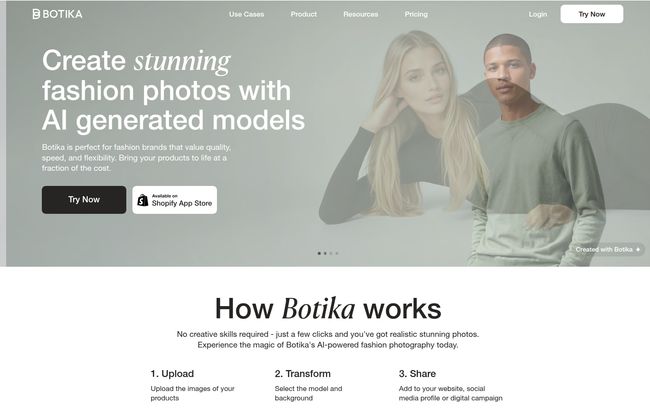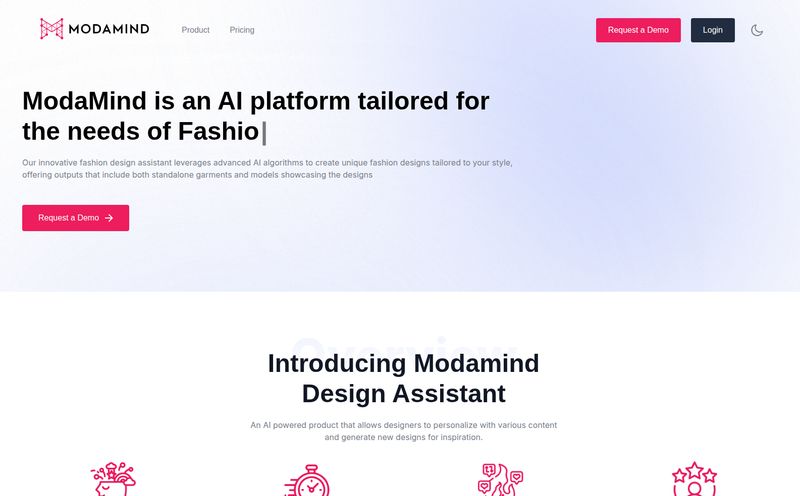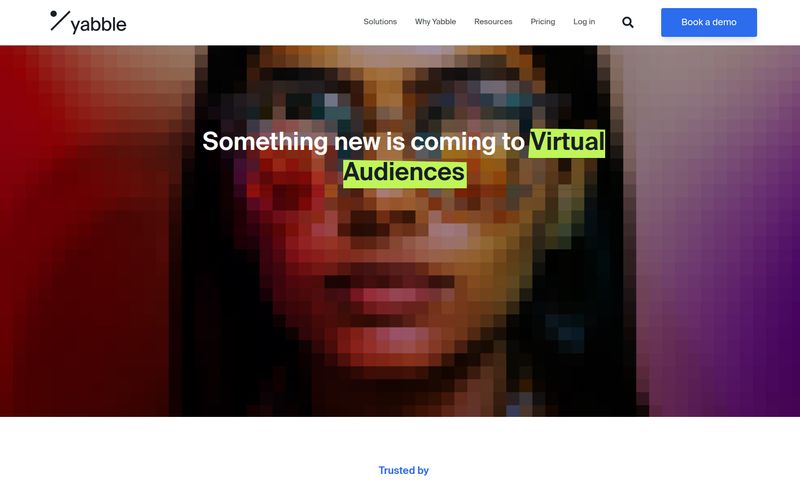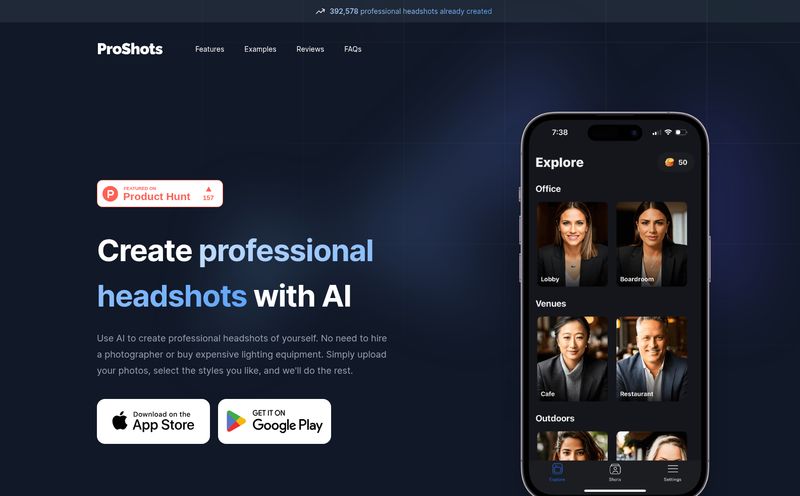I swear, if I have to coordinate one more photoshoot, I might just pack it all in and become a goat farmer. Between finding the right models, booking a photographer who gets the vibe, renting a studio, and praying the weather plays ball for three straight hours... it’s a recipe for a migraine. For any of you running an online apparel store, you know exactly what I'm talking about. The cost, the time, the sheer logistical headache. It’s the single biggest bottleneck between getting a great new product and getting it in front of customers.
For years, we’ve just accepted this as the cost of doing business. But now, the winds of change are blowing, and they smell a lot like generative AI. I've been keeping a close eye on this space, and a platform called Botika recently caught my attention. It claims to be able to take your simple product photos and, like magic, place them on stunning, photorealistic AI-generated models. No studio, no crew, no drama. Just a few clicks.
Sounds too good to be true, right? That’s what I thought too. So, I did what any self-respecting SEO and traffic nerd would do: I dug in. Let's see if Botika is the real deal or just another piece of vaporware.
So What on Earth is Botika Anyway?
Think of Botika as a digital modeling agency and photo studio that lives in your web browser. It’s built on generative AI specifically for one thing: creating high-quality, on-model fashion photography without a physical photoshoot. You start with a basic image of your clothing—maybe a flat-lay on your floor or a shot on a mannequin—and the platform does the heavy lifting.
The core promise is simple: Upload a photo of your garment, choose an AI model from their diverse portfolio, select a background, and poof—you get a professional, ready-to-use fashion photo. It’s designed to slash costs, obliterate turnaround times, and maybe, just maybe, make our lives as marketers a little bit easier. It reminds me a bit of the early days of Canva, when people scoffed at the idea of not hiring a graphic designer for every little thing. We all know how that story ended.

Visit Botika
How Botika Can Revolutionize Your Workflow
The process itself seems almost insultingly simple, which, I have to admit, I love. It breaks down into three basic steps:
- Upload Your Product: You give the AI a clean photo of your apparel. This could be a ghost mannequin shot or even a neat flat lay. The cleaner the input, the better the output. Garbage in, garbage out, as they say.
- Choose Your Look: This is the fun part. You browse through Botika’s library of AI-generated models. The emphasis on diversity here is a big plus. You can find models that truly represent your target audience. Then, you pick a background, whether it’s a clean studio white or something more environmental.
- Generate and Share: The AI works its magic, generating a new, photo-realistic image of your garment on the chosen model. From there, it's ready for your product pages, social media, ads—wherever.
This whole process can take minutes, not weeks. The implications for speed and agility are pretty massive.
The Big Wins: Why Your Brand Might Actually Need This
Okay, the tech is cool. But what does it mean for the bottom line? This is where Botika’s claims get really interesting. I'm always skeptical of big numbers, but the potential here is hard to ignore.
Slashing Your Photography Budget
Botika throws around a number that makes you sit up straight: up to 90% reduction in visual production costs. Let's break that down. A single traditional photoshoot can easily run you thousands of dollars when you factor in the model, photographer, MUA, stylist, studio rental, and retouching. With Botika, you're looking at a monthly subscription fee that costs less than a decent dinner out. For a small business or a startup bootstrapping its way to success, this isn't just a saving; it's a lifeline.
Accelerating Your Time to Market
Fashion moves fast. A trend can be hot one week and old news the next. Botika claims to be up to 10x faster than traditional methods. Imagine getting a new shipment of blouses and having them live on your site, on ten different models, the very same day. No more waiting for photoshoot availability or post-production edits. This speed allows you to be ridiculously responsive to market trends and keep your store looking fresh.
Boosting Sales Through Representation
This, for me, is the most compelling argument. We all know that customers are more likely to buy a product when they can see it on someone who looks like them. Botika’s diverse portfolio of AI models allows you to showcase your apparel on a wide range of ethnicities, sizes, and ages. It's not just about being inclusive for the sake of it—it’s smart business. By reflecting your diverse customer base in your product imagery, you build connection and trust, which almost always translates to higher conversion rates and average order values.
"I’m truly grateful for Botika for the amazing service and product that they offer! They’ve allowed my clients and I to streamline our e-com service and turnarounds from days to hours."
- David Hamas, Photographer & Videographer
Let's Be Real: The Potential Downsides and Limitations
Alright, let's pump the brakes a little. No tool is perfect, especially not one on the cutting edge of AI. It’s important to go in with your eyes open. Based on my analysis and what the platform itself admits, there are a few things to keep in mind.
For starters, Botika is currently focused pretty much exclusively on clothing. So if you're selling complex jewelry, handbags, or shoes, this might not be your silver bullet just yet. The AI can also struggle a bit with perfectly rendering accessories that are part of a clothing photo, so some manual cleanup in Photoshop might be needed.
You also don't get to upload your own custom models or backgrounds. You're working within their provided library. While it's extensive, brands with a very specific aesthetic might find this limiting. Finally, there's the credit system. On the standard monthly plans, your credits don't roll over. So, you have to use 'em or lose 'em. However, if you opt for an annual plan, they do roll over, which is a significant incentive to commit for the year.
Breaking Down The Botika Pricing
So, what’s this going to set you back? The pricing structure is pretty straightforward, based on monthly tiers that give you a set number of credits. One credit generally equals one generated image.
| Plan | Price (Monthly) | Credits | Best For |
|---|---|---|---|
| Lite | $33/month | 30 Credits | Startups and small shops testing the waters. |
| Pro | $35/month | 30 Credits | Growing brands needing access to all models and more editing features. |
| Advanced | $40/month | 30 Credits | Teams and larger operations that need multi-user access. |
Honestly, the price jump between the plans is tiny. For my money, the Pro plan at $35/month seems like teh no-brainer. For an extra two bucks over Lite, you get access to their entire model gallery and photo editing capabilities. The real decision is whether to go monthly or spring for an annual plan to get that sweet, sweet credit rollover. If you have seasonal product drops, the annual plan is probably the smarter financial move.
Frequently Asked Questions about Botika
Do I need to be a tech wizard to use Botika?
- Not at all. The platform is designed to be incredibly user-friendly. If you can upload a photo to social media, you can use Botika. The interface is clean and the 3-step process is about as simple as it gets.
Are the image rights really free?
- Yes, this is a huge one. Once you generate an image with your credits, you get full commercial usage rights. No ongoing royalties or weird licensing fees to worry about. You create it, you own it. Period.
Can Botika handle complex patterns or sheer fabrics?
- This is where things can get tricky. Generative AI is getting better every day, but complex textures like intricate lace, very fine patterns, or semi-transparent fabrics can sometimes challenge the system. I'd recommend starting with simpler garments to get a feel for it and then testing your more complex pieces. The results might surprise you.
How many images can I generate with 30 credits?
- Typically, one final, high-resolution generated photo costs one credit. So a 30-credit plan gives you 30 unique on-model images per month. You could use this to showcase 10 products on 3 different models each, for example.
What's the main difference between monthly and annual plans for credits?
- It's all about rollover. With a monthly plan, your 30 credits expire at the end of the month. If you subscribe to an annual plan, your credits accumulate and roll over, which is ideal for businesses with inconsistent or seasonal production schedules.
Is using AI models ethical?
- This is a big and important conversation in the industry. The way I see it, Botika isn't aiming to replace human models entirely, but to provide an alternative for a specific need—high-volume e-commerce imagery. It democratizes access to diverse representation, which is a positive step. The ethical concerns are real, but I believe it can coexist as a tool that expands possibilities rather than just replacing jobs.
My Final Verdict on Botika
So, is Botika the future? I think it’s a massive piece of it. It’s not a magic wand that will solve every single creative problem for a fashion brand. You'll still want campaign shoots with real people to build your brand’s story and soul. But for the day-in, day-out grind of creating clean, effective, and diverse e-commerce product photos? This thing is a game-changer.
It addresses some of the biggest pain points for online apparel retailers: cost, speed, and representation. The potential to level the playing field, allowing smaller brands to compete with the visual merchandising of giants, is genuinely exciting. It’s a tool that empowers creativity and efficiency at the same time.
If you're in the apparel business and you're tired of the photoshoot treadmill, I think you owe it to yourself to at least check it out. The future of product photography might not be what we expected, but it’s arriving faster than we think.



